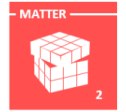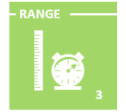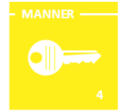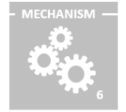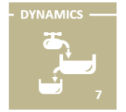Financial Values
The Financial Values can be split in two categories:
- Revenues: Amounts of money received by the organization in a transaction, in exchange of goods or services.
- Costs: Amounts of money paid by the organization in a transaction, in exchange of supplies.
The Bm2 framework adopts a cash flow approach, not an accounting approach: Revenues consist in cash inflows, and Costs consist in cash outflows.
(click on the following elements for more details)
> Revenues
Revenues depend on quantities and prices. For this reason, analysis of Revenues can be done regarding both aspects. Here, "revenues" are considered as the cash inflow associated with a specific type of transaction (for instance, for a specific product range).
CONTEXT
Revenues may:
- represent a small or large portion of total revenues for the organization
- be higher or lower than competition
Prices may:
- be determined by the organization (price setter) or not (price taker)
- be higher or lower than competition
- be related to a fixed or flexible budget
Quantities may:
- be determined by the organization (quantity setter) or not (quantity taker)
- be higher or lower than competition
CONTENT
Revenues may be:
- Operational Revenues (from the selling of usual goods and services)
- Divestment Revenues (from the selling of long-term assets)
- Financial Revenues (from the selling of securities or rights associated with owned securities)
CONCEPT
Prices may:
- be fixed, variable, dynamically set,
- be stable, cyclical or moving,
- depend on demand level,
- depend on costs,
- depend on willingness to pay,
- depend on regulations,
- depend on competition,
- depend on uncontrolable factors or not,
- depend on quantity per transaction or not,
- depend on the nature of the customer or not,
- depend on the level of utility for the customers or not,
- be based on delivered value or not,
- be result-based,
- be based on profit-sharing,
- be based on a frame agreement,
- lead to elastic or non-elastic demand,
- have a low or high dependence on demand,
- have a low or high dependence on costs,
- have a low or high dependence on availability of products,
- have a low or high dependence on availability of substitute products,
- have a low or high dependence on availability of complementary products,
- have a low or high dependence on other products in the portfolio,
- ...
Link with Super-Processes:
Revenues are the main outcome of the Capture Super-Process.
(see Process Quadrant)

> Costs
CONTEXT
Costs may be:
- represent a small or large portion of total revenues for the organization
- be higher or lower than competition
- be determined by the organization or not
CONTENT
Costs may be:
-
Operational cash outflow (purchasing of supplies)
-
Financing cash outflow (debt repayment, dividends)
-
Investment cash outflow (investments - including financial)
CONCEPT
Costs may:
- be fixed costs or variable costs with regard to supplies,
- be fixed or dynamically set,
- be stable, cyclical or moving,
- depend on on supply level,
- depend on on regulations,
- depend on on competition,
- depend on uncontrolable factors or not,
- depend on quantity per transaction or not,
- depend on the nature of the supplier or not,
- depend on the level of utility for the organization or not,
- be based on received value or not,
- be result-based,
- be based on profit-sharing,
- be based on a frame agreement,
- lead to elastic or non-elastic supply,
- have a low or high dependence on supply level,
- have a low or high dependence on demand level,
- have a low or high dependence on availability of substitute products,
- have a low or high dependence on availability of complementary products,
- ...


